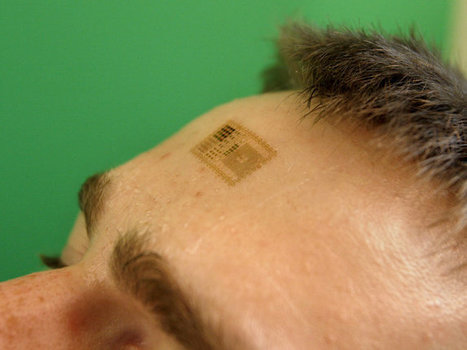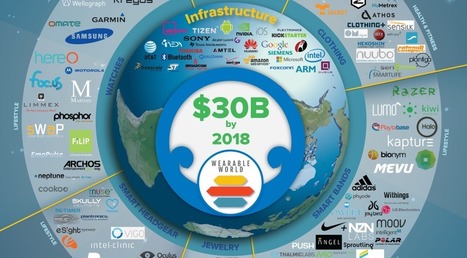When it comes to the future of computing, there is one major known and a principal unknown.
The known, with almost guaranteed certainty, is that the next era of computing will be wearables. The unknown, with commensurate guaranteed uncertainty, is what these wearables will be and where on your body they will live.
Apple and Samsung, for example, are betting on the wrist; Google, the face. A slew of tech companies believe clothing will simply become electronic. Yet there’s a whole new segment of start-ups that believe all of the above are destined for failure and that we humans will become the actual computers, or at least the place where the technology will reside.
Their enthusiasm is on an emerging class of wearable computers that adhere to the skin like temporary tattoos, or attach to the body like an old-fashioned Band-Aid.
Get Started for FREE
Sign up with Facebook Sign up with X
I don't have a Facebook or a X account
 Your new post is loading... Your new post is loading...
 Your new post is loading... Your new post is loading...

Richard Platt's curator insight,
December 29, 2014 2:36 AM
Professionally speaking, solutions in search of a problem, questionable use cases, but hey may be you have a different opinion? 
Moolahonly's curator insight,
May 12, 2015 1:08 PM
These are the types of wearable devices we would like help get funding on our crowdfunding platform http://bit.ly/1Fgh78d ; 
Ensil's curator insight,
May 12, 2015 2:16 PM
It's great and refreshing to see a post on wearables that doesn't involve a watch or wristband! |

Richard Platt's curator insight,
August 25, 2015 3:33 AM
The conundrum researchers have faced in developing miniature energy storage devices, such as batteries and supercapacitors, has been figuring out how to increase the surface area of the device, to store more charge, without making it larger. "Among all modern electronic devices, portable electronics are some of the most exciting," ISEM PhD student Monirul Islam said. "But the biggest challenge is to charge storage in a small volume as well as being able to deliver that charge quickly on demand." To solve this problem, a team of PhD students, led by Dr Konstantin Konstantinov under the patronage of ISEM Director Professor Shi Xue Dou and with the support of Professor Hua Kun Liu, the head of ISEM Energy Storage Division, have developed a three-dimensional structure using a flat-pack self-assembly of three components: graphene, a conductive polymer and carbon nanotubes, which are atom-thick lattice-like networks of carbon formed into cylinders. - The so-called wonder material graphene, made from single atom-thick layers of graphite, was a suitable candidate due its electronic performance and mechanical strength. "We knew in theory that if you can make a sort of carbon skeleton you have a greater surface area and greater surface area means more charge," Dr Konstantinov said. "If we could efficiently separate the layers of carbon we could then use both surfaces of each layer for charge accumulation. The problem we faced was that fabricating these 3D shapes in practice, not just theory, is a challenging, if not impossible task." The solution was to flat-pack the components by building the 3D shape layer-by-layer, much like a miniature exercise in cake decoration. The graphene in liquid form was mixed with the conductive polymer and reduced to solid and the carbon nanotubes carefully inserted between the graphene layers to form a self-assembled flat-packed, wafer-thin supercapacitor material. |





















Wearables under the skin, on the skin and more, coming in the near future.